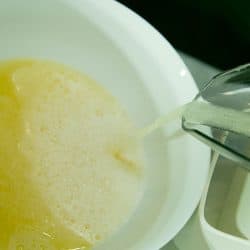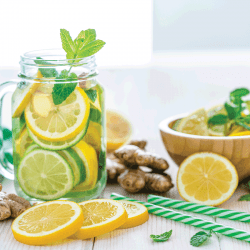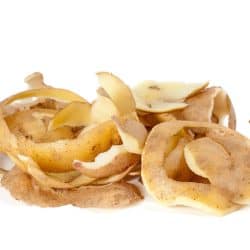Lemon zest is highly popular because of the flavorful zing it adds to a wide variety of dishes. Many recipes call for it, but not all novice cooks know how to zest a lemon. Additionally, many don't have the specialized kitchen gadgets usually used for the job. So, how do you zest a lemon, and what tools do you need? We've done the research, and we have the answers for you!
You can use any of these kitchen gadgets to zest a lemon:
- Microplane
- Citrus zester
- Box grater
- Potato peeler
- Paring knife
In the remainder of this article, we'll describe each of these methods for zesting lemons and identify the best lemon zesters on the market. We will also explain what part of the lemon you should zest, how lemon zest compares with lemon juice, and what alternatives you can use if you don't have a lemon handy. Without further ado, let's get into it!
![Hand zesting lemon using a grater, How To Zest A Lemon [5 Ways, Inc. Without A Grater]](https://kitchenseer.com/wp-content/uploads/2021/09/How-To-Zest-A-Lemon-5-Ways-Inc.-Without-A-Grater.png)
5 Ways To Zest A Lemon
Because zesting concentrates on the outer skin of the lemon peel, it's important to get the skin entirely clean before you begin zesting. Unless you purchase organic lemons, there will be pesticide residues on the peel, as well as a thin layer of wax that's applied to keep the lemon looking bright and fresh. In addition, all produce—even organic—has some contaminants on it from harvesting, transportation, and handling.
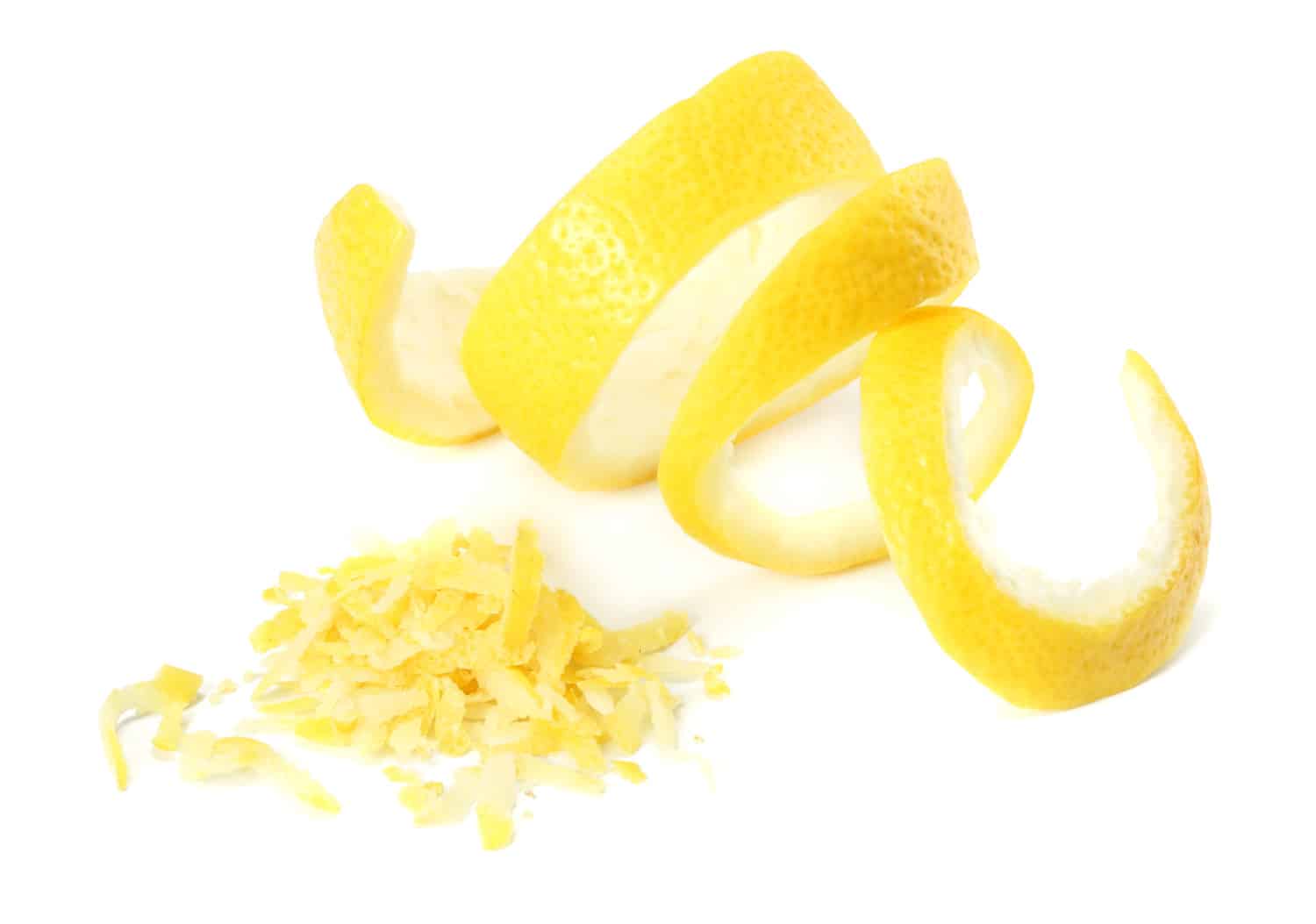
To wash and de-wax your lemons in preparation for zesting, follow these steps:
- In a large mixing bowl, combine one part vinegar with eight parts warm water.
- Place the lemons in the vinegar-water solution, and let them sit for 30 minutes.
- Gently scrub the lemons with a vegetable brush.
- One by one, remove the lemons from the bowl and rinse them under cool running water.
- Dry the lemons with a food-grade towel.
Now you're ready to zest your lemon! Grab one of these kitchen gadgets and follow our directions, below.
1. Microplane
A Microplane is a tool that was developed specifically to zest citrus fruits. It consists of a handle and a long stainless steel shaft etched with hundreds of tiny holes with razor-sharp edges. The Microplane looks like a carpenter's rasp and functions as a small grater, producing a very fine, almost powdery zest. Here's how you use it:
- Grasp the Microplane's handle in one hand and hold it firmly.
- Holding the lemon in your other hand, rub it gently up and down the surface of the Microplane. Hold the Microplane still throughout the zesting process.
- As you work, rotate the lemon so that just the top, bright yellow layer of the peel is shaved away. This layer is the zest of the lemon.
- Continue until you have removed the entire top layer of the peel or until you have as much lemon zest as you need.
Click here for this Microplane on Amazon.
2. Citrus Zester
A citrus zester is about four inches long and features a handle and a small stainless steel head with five or six fingerlike protrusions. When used properly, it produces long shreds of attractive, bright yellow zest.
- Position the lemon securely in one hand, with your thumb and forefinger circling its middle.
- Place the fingered end of the zester at the top of the lemon, and dig it into the top layer of the peel. Don't go too deep, or you'll get the bitter pith.
- Drag the zester across the lemon's skin, following the contours of the fruit. This should produce long shreds of bright yellow peel.
- Continue until all of the yellow top skin has been zested away, leaving the lemon covered with only the white pith.
Click here for this citrus zester on Amazon.
3. Box Grater
If you don't happen to have a Microplane or zester among your kitchen gadgets, you can use a box grater to zest a lemon. This works in much the same way that a Microplane does, but the resulting zest from the box grater is a bit coarser.
- Place the box grater on your kitchen counter with its fine grating side facing toward you.
- Grasp the box grater's handle firmly and hold it steady on the counter throughout the procedure.
- Hold the lemon in your other hand and rub it gently up and down against the grater. Be careful: the grater's sharp edges can scrape your hand raw.
- Rotate the lemon as its top layer of bright yellow skin is grated away, leaving only the white pith beneath.
- Continue until all of the top layer has been zested.
Click here for this box grater on Amazon.
4. Potato Peeler
You can also use a potato peeler to zest a lemon, although the process is a bit more involved. Here's how:
- Grasp the lemon gently in one hand.
- Place the sharp edge of the peeler at the top of the lemon, and push it in until it barely breaks the surface of the lemon's peel.
- Carefully pull the peeler down, following the curve of the fruit. You should get a long strip of the bright yellow skin of the peel.
- Repeat this process until the entire lemon has been peeled and only the white pith remains covering the fruit.
- Finely chop the long strips of peel into zest.
This process produces a confetti-like zest consisting of tiny squares of the bright yellow, flavorful peel.
Click here for this potato peeler on Amazon.
5. Paring Knife
If all else fails and you don't have any of the kitchen gadgets listed above, you can always resort to zesting lemons with a paring knife. Make sure to use a very sharp knife, though, or you'll get lots of the bitter pith along with the tasty yellow skin.
- Place the lemon on a cutting board and hold it steady. If you prefer, you can cut off one end of the lemon and place the flat part on the cutting board for stability.
- Insert the blade, near its tip, barely under the top layer of the peel.
- Move the blade down until a small piece of the bright yellow skin peels off.
- Continue this process until you've peeled away all of the skin.
- If any of the bitter white pith is attached to the underside of the peel, use your knife to scrape it off.
- Dice or mince the pieces of peel until they reach the desired size and consistency for your zest.
Click here for this paring knife on Amazon.
What Is The Best Zester For Lemons?
Microplanes and citrus zesters were developed specifically to separate the flavorful outer skins of citrus fruits from the pith beneath. Both gadgets are highly effective and easy to use, and they have quickly become popular among cooks.
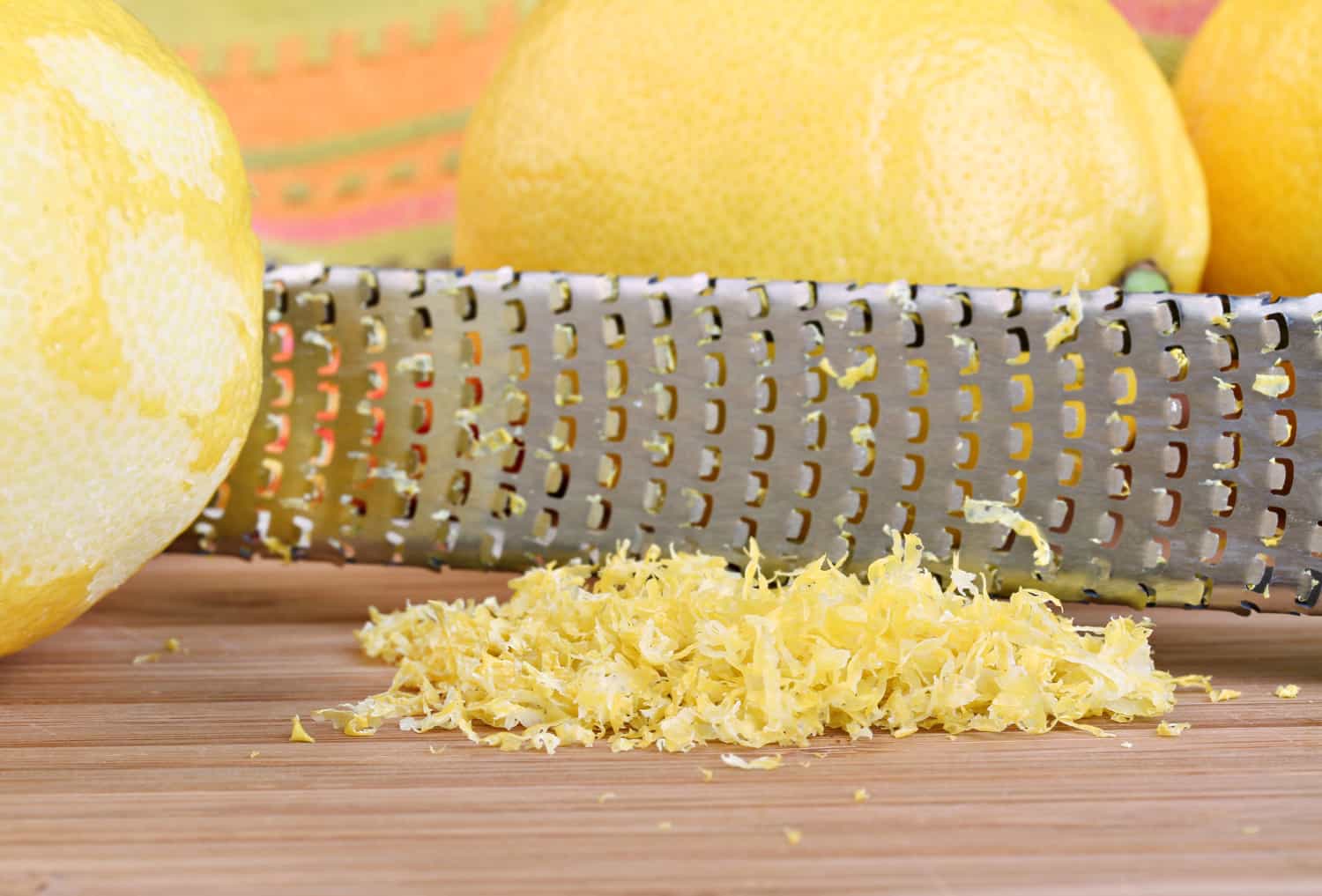
Choosing which is best for any recipe depends on your personal preference and the consistency of zest you desire. For example, if you need a bit of powdery zest to sprinkle atop a lemon bar, a Microplane is your best bet. On the other hand, if you want to add a visual zing to a dish, you may prefer the longer, curly strings of zest produced by a zester.
What Part Of The Lemon Do You Zest?
Lemon peel consists of two distinct parts: the flavedo (the bright yellow outer skin) and the albedo (the thick white pith between the flavedo and the fruit). The flavedo gets its strong, appealing flavor from the citrus oils that it contains.
By contrast, the pith contains no oils, and it tastes bitter. To zest a lemon, you should be careful to use only the flavedo, so you get all the rich taste and none of the bitterness.
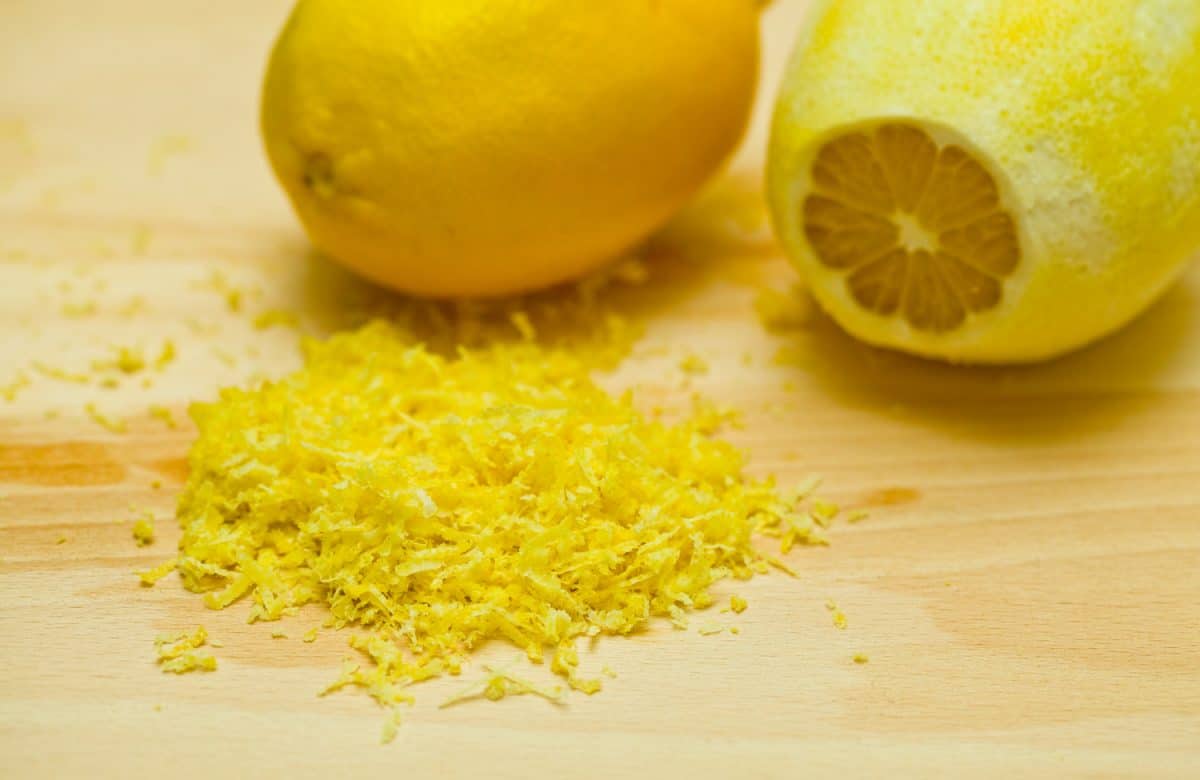
Is Lemon Zest Stronger Than Lemon Juice?
Lemon zest is generally considered stronger than lemon juice; when you use lemon juice as a substitute for zest, you should use 2 tablespoons of juice for every 1-tablespoon of zest called for in the recipe.
In addition to their differing strengths, lemon zest and lemon juice also have some marked differences in taste. Zest is less acidic and thus less tart than lemon juice. Also, the essential oils in lemon zest give it a richer flavor than lemon juice has.
Is Lemon Zest Necessary?
Lemon zest may seem like an optional ingredient, especially because most recipes call for small amounts. However, it packs a serious punch, so even a little bit of zest adds a great deal of zing to a dish. So, what should you do if a recipe calls for lemon zest and you don't happen to have a fresh lemon?
Here are a few things to consider:
How Much Lemon Zest Is Called For?
If the recipe calls for 2 tablespoons or more of lemon zest, your best bet is to make a trip to the grocery store and pick up some lemons. You can find adequate substitutes for smaller amounts of zest, but nothing can really replace it as a key ingredient in a recipe.
The closest substitute is lemon juice, but adding 2 tablespoons or more of liquid in place of a dry ingredient can throw off the texture of the recipe. Also, if there's any baking soda or baking powder in the recipe, lemon juice will react with it.
What's The Name Of The Dish?
If the name of the dish you're preparing includes the word lemon (e.g., Honey Lemon Garlic Chicken, Lemon Poppyseed Pancakes, Lemon Curry), then it's critical to include the taste of lemon in the recipe. Ideally, use lemon zest as called for in the recipe. If you have no lemons, there are a couple of workable substitutes:
- Lemon juice: use 1-teaspoon of juice for every 1/2-teaspoon of zest called for in the recipe.
- Dried lemon peel: use 1/2-teaspoon of peel for every 1-teaspoon of zest.
- Lemon extract: use 1/2-teaspoon of extract for every 1-teaspoon of zest.
If you're making a recipe that calls for lemon zest but whose title doesn't include lemon, then it's the citrus zing, rather than the lemon flavor, that's most important. In this case, you can substitute the zest of a lime or an orange for the lemon zest.
What's The Dish's Cultural Background?

If you're considering substituting the zest of another citrus fruit for lemon zest, keep in mind that doing so will change the dish's taste. Lemon is most often associated with Mediterranean recipes, so it's best to stick with a lemon-flavored substitute if you don't have lemon zest.
Latin American recipes work best if lime zest is used in lieu of lemon zest. For Oriental dishes, orange or lime zest can replace lemon zest if necessary. You can also use lemongrass as a substitute for lemon zest in Thai or Southeast Asian dishes.
What About Sweet Dishes?
For desserts and other sweet-tasting dishes, avoid lemon juice due to its tart flavor. Here are three other options:
- Pure lemon oil: use 1/4-teaspoon of oil for every 1-teaspoon of zest called for in the recipe.
- Lemon marmalade: use 1-teaspoon for every 1-teaspoon of zest. This is especially tasty in baking.
- Candied lemon peel: use 1-teaspoon for every 1-teaspoon of zest. Candied lemon peel is great for desserts.
Can I Use Lemon Pepper Instead Of Lemon Zest?
Lemon pepper seasoning tastes exactly the way its name implies it should: lemony and peppery. Accordingly, you can use it as a substitute for lemon zest in any dish that wouldn't be diminished by adding pepper.
Lemon pepper generally works best in savory meat dishes and some salads and vegetable dishes. Don't use it in desserts or other sweet dishes, nor in baking.
In Conclusion
![Hand zesting lemon using a grater, How To Zest A Lemon [5 Ways, Inc. Without A Grater]](https://kitchenseer.com/wp-content/uploads/2021/09/Hand-zesting-lemon-1200x800.jpg)
Now that you know how to zest a lemon and what the best tools are for the job, you're ready to tackle those zesty, zingy entrees, salads, veggies, baked goods, and desserts. Keep cooking, and enjoy!
You may also enjoy:
How To Juice Lemons With A Food Processor
Does Microwaving Lemons And Limes Make Them Juicier?







![A grater with a lemon zest on a table and a collage of different types of graters, 12 Types of Graters [and How to Use Them]](https://kitchenseer.com/wp-content/uploads/2020/04/12-Types-of-Graters-and-How-to-Use-Them-Featured-250x250.jpg)
